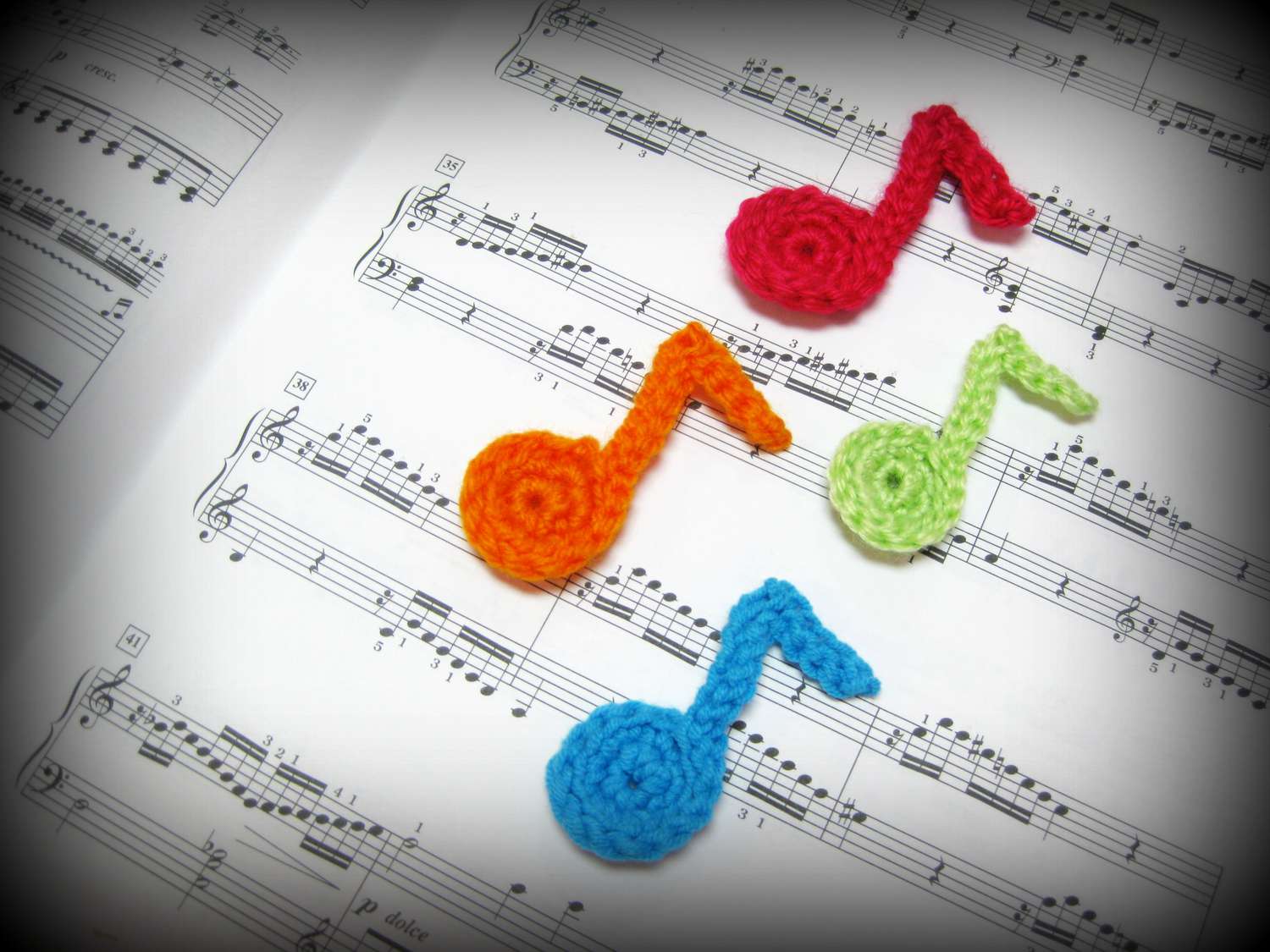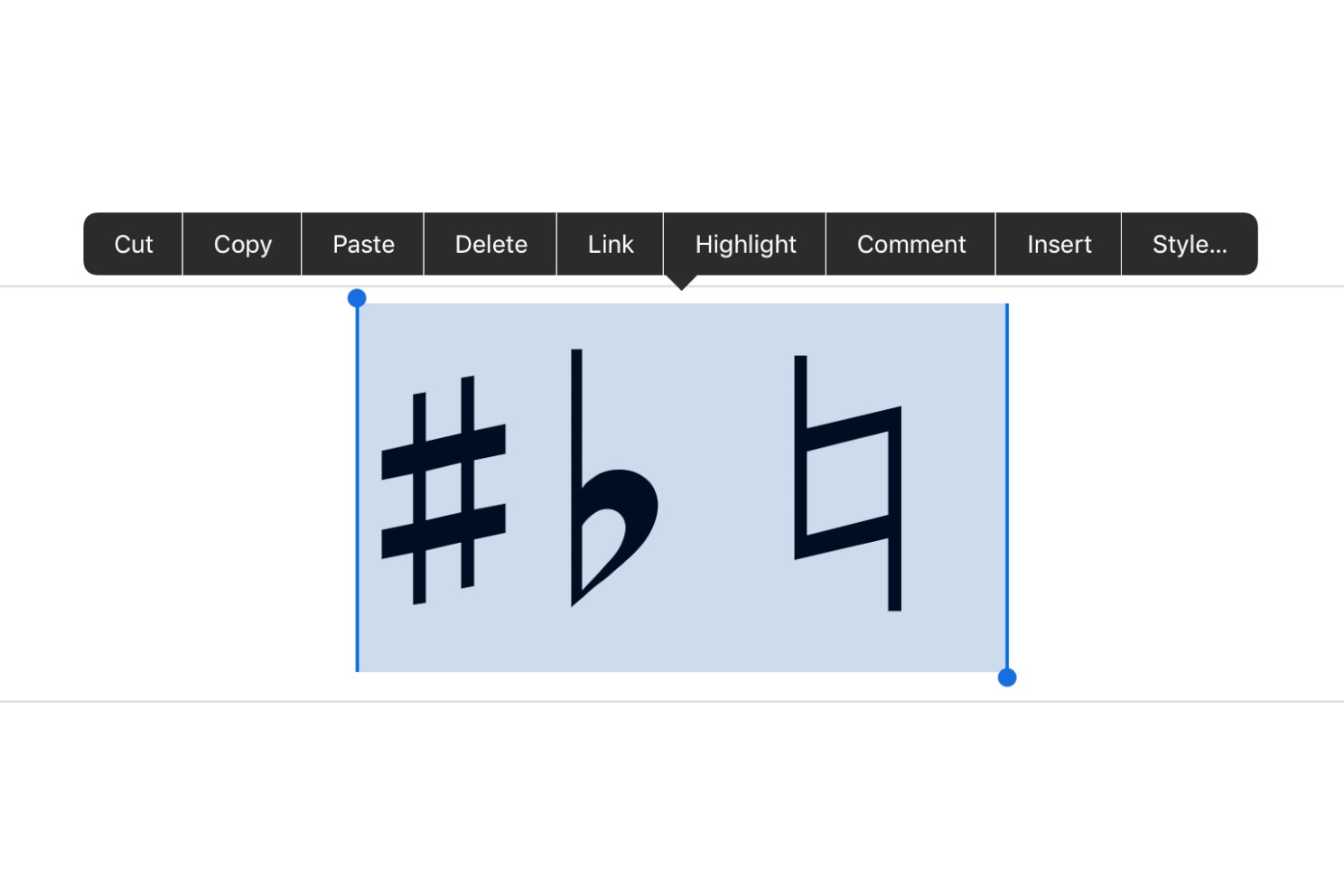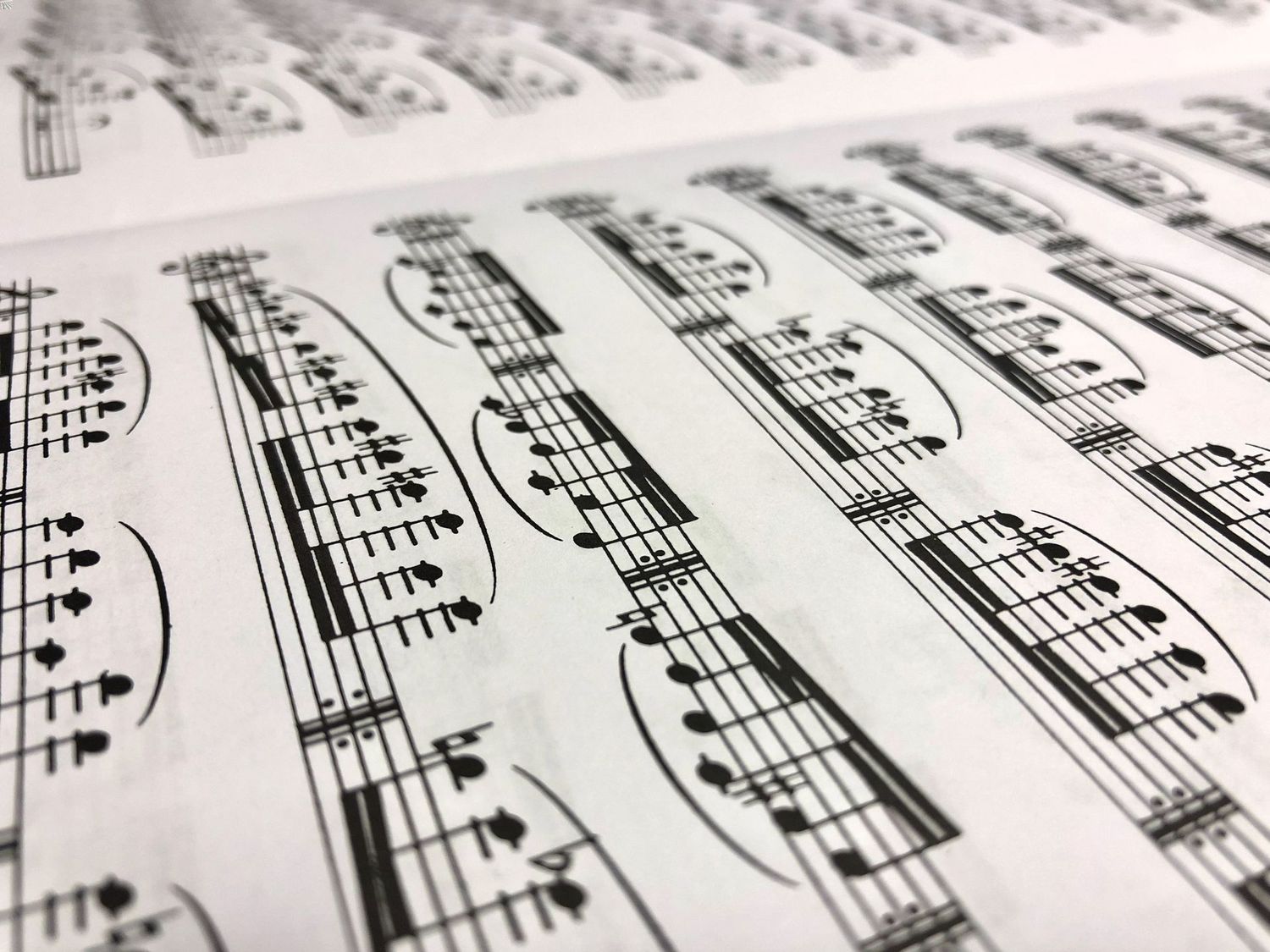Home>Events & Info>Note>How High Is Music Note A4


Note
How High Is Music Note A4
Modified: February 15, 2024
Discover the exact height of music note A4 and its significance in music theory. Learn all about this essential note and its musical properties.
(Many of the links in this article redirect to a specific reviewed product. Your purchase of these products through affiliate links helps to generate commission for AudioLover.com, at no extra cost. Learn more)
Table of Contents
Introduction
Welcome to the fascinating world of music notes! Have you ever wondered how musicians achieve the perfect pitch in their performances? How is it possible for different instruments and voices to produce the same note? This is where the concept of the A4 music note comes into play.
Music notes are essential elements in the world of music theory and performance. They represent specific pitches and serve as a universal language for musicians to communicate and create beautiful melodies. One particular note, A4, holds significant importance as a reference point for tuning and establishing the pitch standard in various musical systems.
In this article, we will delve into the history and science behind music notes, explore the concept of pitch, and dive into the intricacies of the A4 note. We will uncover how subtle variations in A4 can influence the perception of music, and how different musical systems adopt their own approach to this foundational pitch.
Join us on this sonic journey as we uncover the enchanting world of music notes and unravel the mysteries of the A4 pitch!
History of Music Notes
The use of music notes to notate pitches and rhythms has a rich and storied history that dates back centuries. The origins of music notation can be traced back to ancient civilizations such as the Greeks and Egyptians, who developed various systems to represent melodic and rhythmic patterns.
However, it was in medieval Europe that the groundwork for modern music notation was established. Around the 9th century, the development of neumatic notation allowed for the representation of melodic contours through a series of ascending and descending symbols above the text.
As music became more complex, the need for a more precise notation system arose. This led to the birth of staff notation in the 11th century, which assigned specific pitches to lines and spaces on a set of horizontal lines. The evolution of staff notation continued throughout the Renaissance and Baroque periods, as composers and theorists refined the system to include additional symbols and markings.
During the 17th and 18th centuries, the establishment of standardized pitch became crucial for musicians who sought to perform together. Various tuning systems were developed across different regions, resulting in variations in the pitch of the A note. This lack of standardization led to difficulties in ensemble playing and prompted the need for a universal reference pitch.
In the early 19th century, efforts were made to establish a precise pitch standard. One of the significant milestones was the adoption of the A note tuned to 440 Hz (cycles per second) as the international standard in 1939. This pitch, called A4, became the reference point for tuning instruments and setting the pitch for musical compositions.
Since then, A4 at 440 Hz has been widely accepted as the international standard across various musical genres and performance settings. However, it’s worth noting that there have been regional variations and historical shifts in pitch standards, with some musical traditions favoring slightly higher or lower A4 frequencies.
Today, music notes and their notations continue to be an integral part of music theory and performance. The evolution of music notation has made it possible for musicians to share and preserve musical compositions across time and space. The concept of A4 as the reference pitch has helped bring harmonious unity to the vast world of music.
The Science of Pitch
When we hear a musical note, what we are actually perceiving is the pitch, which refers to the perceived frequency of a sound wave. The science behind pitch lies in the fundamental principles of physics and the way our ears and brain interpret sound.
Every sound we hear is a result of vibrations, or oscillations, in the air. These vibrations travel as waves, and their specific characteristics determine the pitch we perceive. The pitch of a sound wave is directly related to its frequency, which is the number of oscillations occurring per second.
Frequency is measured in hertz (Hz), with one hertz representing one oscillation per second. In the context of music, different pitches correspond to different frequencies. For example, the A4 note, which serves as a reference pitch, is commonly tuned to 440 Hz.
Our ears play a crucial role in capturing these sound waves and transmitting them to our brain for interpretation. The outer ear collects the sound waves and directs them to the eardrum, causing it to vibrate. These vibrations are then transmitted through the middle ear to the cochlea, a spiral-shaped structure in the inner ear.
Inside the cochlea, tiny hair cells are stimulated by the vibrations. These hair cells convert the sound energy into electrical signals, which are then transmitted to the auditory nerve and sent to the brain for processing. The brain interprets these electrical signals as different pitches, allowing us to perceive and distinguish the range of notes in music.
Interestingly, pitch perception is not solely determined by frequency. Factors such as intensity (volume) and timbre (tone quality) also influence our perception of pitch. This is why even notes with the same frequency can sound different depending on the instrument or voice producing the sound.
Understanding the science of pitch is essential for musicians, as it helps them tune their instruments accurately and create harmonious melodies. It also highlights the intricate relationship between sound waves, the human ear, and our perception of music. By harnessing the science of pitch, musicians can master the art of delivering captivating performances that resonate with listeners.
Understanding Frequency and Wavelength
Frequency and wavelength are fundamental concepts in understanding the characteristics of sound waves and the way they relate to the perception of pitch. By examining these concepts, we can gain a deeper appreciation for how music notes are created and distinguished from one another.
Frequency refers to the number of cycles or oscillations of a sound wave that occur in one second. It is measured in hertz (Hz), with one hertz representing one cycle per second. In the context of music, the pitch of a note is directly related to its frequency. Higher frequency waves produce higher-pitched notes, while lower frequency waves produce lower-pitched notes.
Wavelength, on the other hand, refers to the physical distance between two corresponding points on a sound wave, such as two peaks or two troughs. It is typically measured in meters. The relationship between frequency and wavelength is inverse: as frequency increases, the wavelength decreases, and vice versa. This means that higher-pitched notes have shorter wavelengths, while lower-pitched notes have longer wavelengths.
To better visualize this, imagine a vibrating guitar string. When plucked, the string produces sound waves that travel through the air. The frequency of the sound wave is determined by how fast the string vibrates—faster vibrations result in a higher frequency and, consequently, a higher-pitched note. The wavelength, on the other hand, is determined by the length of the string and the speed at which the wave travels through it. A shorter string will produce a shorter wavelength and, again, a higher-pitched note.
Understanding the relationship between frequency and wavelength allows musicians to make informed decisions when adjusting the pitch of their instruments. By altering the length or tension of a string or adjusting the length of an air column in a wind instrument, musicians can manipulate the frequency and wavelength to achieve the desired pitch.
It is worth noting that frequency and pitch are closely related, but they are not the same thing. Frequency is a measurable physical attribute, while pitch is a subjective perception. Two sound waves with the same frequency can be perceived as different pitches due to factors such as harmonics, overtones, and timbre.
By grasping the concepts of frequency and wavelength, musicians can gain a deeper understanding of the physics behind music notes. These concepts are fundamental to the art of creating and manipulating sound, allowing musicians to craft melodies that captivate and inspire listeners.
The Standard Pitch A4
In the world of music, the standard pitch of the A4 note serves as the reference point for tuning and establishing the pitch standard. A4 is the note A above middle C on a piano keyboard and is widely recognized as the central pitch around which other notes are organized.
The standard pitch for A4 is commonly set at a frequency of 440 Hz (cycles per second). This means that when the A4 note is played or produced on an instrument, it vibrates at 440 cycles per second. This frequency provides a consistent and universally accepted reference point for musicians worldwide.
The decision to standardize the pitch of A4 at 440 Hz was made in the 20th century to promote uniformity in the performance and interpretation of music. Prior to this, different regions and musical traditions had their own pitch standards, which created challenges when musicians from different backgrounds came together to perform.
The adoption of a specific pitch standard eliminated these discrepancies and ensured that musicians could play in tune with each other. It also facilitated the production and reproduction of music across different instruments and recordings, creating a cohesive musical landscape.
While A4 at 440 Hz is the most widely accepted international standard, it is important to note that there have been variations and debates surrounding the exact pitch level of A4. Some musicians and musical cultures prefer slightly higher or lower frequencies for A4.
For example, historically, A4 has been tuned to different frequencies, sometimes as low as 415 Hz or as high as 460 Hz. Additionally, some orchestras and ensembles may choose to tune slightly above or below 440 Hz for various reasons, including the acoustic characteristics of the performance venue or the personal preferences of the conductor and musicians.
Regardless of these variations, the establishment of a standard pitch for A4 has been influential in achieving harmony and coherence in the world of music. It has facilitated collaboration among musicians and allowed for the seamless interpretation and performance of musical compositions across different genres and musical traditions.
Today, when musicians tune their instruments, they often refer to a pitch reference, such as a tuning fork or electronic tuner, set to the standard pitch of A4 at 440 Hz. This ensures that their instruments are in tune with the accepted standard and that they can create beautiful music that resonates with audiences around the world.
Variations of A4 in Different Musical Systems
While the standard pitch for A4 is commonly set at 440 Hz, it’s important to recognize that different musical systems and traditions may have variations in their accepted pitch for A4. These variations can be influenced by historical, cultural, and geographical factors, resulting in diverse tuning systems around the world.
One well-known example is the baroque pitch, prevalent during the Baroque era (approximately 1600-1750). Baroque pitch commonly set A4 at around 415 Hz, which is lower than the modern standard of 440 Hz. This lower pitch was preferred for various reasons, including the tonal characteristics of the instruments used during that period.
In contrast, there are also instances of A4 being tuned to higher frequencies. For instance, the French Baroque pitch set A4 at around 465-470 Hz. This higher pitch created a brighter and more brilliant sound that suited the French Baroque style of music.
Additionally, certain musical traditions and cultures, such as those found in India and parts of the Middle East, have their own unique tuning systems. These systems often employ microtones and divisions of the octave that differ from the standardized Western equal temperament tuning.
For example, Indian classical music utilizes a tuning system called just intonation, which consists of a series of specific ratios between the frequencies of different notes. The precise tuning of A4 in Indian classical music can vary depending on the raga (melodic framework) being performed.
Similarly, the Middle Eastern maqam system features intricate microtonal intervals that differ from the standard Western tuning. In this system, A4 may be adjusted to fit the specific melodic and harmonic requirements of a particular maqam.
These variations in the tuning of A4 across different musical systems highlight the diversity and richness of musical traditions worldwide. They contribute to the unique and distinct sounds and flavors that characterize different genres and cultural expressions.
While the standard pitch of A4 at 440 Hz serves as a practical reference for musicians to ensure consistency and coherence in ensemble playing and cross-cultural collaborations, it is important to appreciate and respect the variations that emerge from different musical traditions. These variations add depth and nuance to the global musical tapestry, allowing for the exploration and celebration of diverse musical expressions.
Factors Affecting the Perception of A4
The perception of A4, like any musical note, can be influenced by several factors that impact how we interpret and experience the pitch. These factors range from individual variations in hearing to cultural and contextual influences. Understanding these factors can shed light on the subjective nature of pitch perception.
1. Individual Differences: Each person has a unique auditory system, and our perception of pitch can vary from person to person. Factors such as age, hearing ability, and musical training can affect how we perceive and distinguish different pitches, including A4. Some individuals may have a more sensitive ear and can detect slight variations in pitch more easily, while others may be less sensitive.
2. Context and Musical Training: Context plays a significant role in how we perceive pitch. Musicians with extensive training and experience are more likely to have developed a refined sense of pitch perception. The musical context, such as the harmonic and melodic surrounding, can also influence the perception of A4 and how it fits within a musical composition.
3. Cultural Influences: Different cultures and musical traditions have their own aesthetic preferences and tuning systems. As a result, the perception of A4 can be influenced by cultural conditioning. For example, some cultures may favor slightly higher or lower tunings, which can impact how they perceive and reproduce the A4 note.
4. Harmonic Relations and Timbre: Pitch perception is not entirely based on frequency alone. The relationship between A4 and other surrounding pitches, such as harmonies and overtones, can affect our perception of A4. The timbre, or tone quality, of an instrument or voice also plays a role in our perception of pitch, making A4 sound subtly different depending on the source generating the sound.
5. Environmental Factors: External factors, such as background noise or the acoustics of a performance space, can influence how we perceive pitch, including A4. Unfavorable acoustic conditions can affect the clarity and accuracy of the perceived pitch, making it more challenging to differentiate and maintain the integrity of A4.
It’s important to recognize that these factors contribute to the subjective nature of pitch perception. While there are established standards for A4 pitch, our individual experiences and cultural contexts can shape how we interpret and relate to this foundational note.
Understanding these factors can help musicians and researchers explore the nuances of pitch perception and the intricacies of musical experiences across diverse individuals and cultures. It reminds us that music is a multi-faceted art form that engages not only our ears but also our emotions, memories, and cultural identities.
Conclusion
The concept of the A4 music note holds significant importance in the world of music. As the reference pitch for tuning and establishing the pitch standard, A4 serves as a unifying force for musicians worldwide.
Throughout history, the development of music notation and the establishment of standardized pitch have shaped the way music is composed, performed, and preserved. The evolution of music notes and their notations has allowed musicians to communicate and create harmonious melodies across time and space.
The science of pitch, which involves understanding frequency and wavelength, unveils the physical principles behind our perception of musical notes. By grasping these concepts, musicians can expertly tune their instruments and create captivating performances that resonate with listeners.
While the international standard for A4 is set at 440 Hz, variations in the tuning of A4 exist in different musical systems and regions. These variations add diversity and richness to the global musical landscape, reflecting the unique cultural expressions and traditions around the world.
Individual differences, cultural influences, and environmental factors all play a role in our perception of A4 and pitch in general. These factors remind us that pitch perception is a subjective experience, shaped by our personal characteristics, musical training, and cultural context.
In conclusion, the concept of A4 and the intricate world of music notes highlight the universal language of music. They connect musicians across cultures and time, allowing them to express emotions, tell stories, and evoke powerful experiences through the power of sound.
So whether you’re listening to the enchanting melodies of a symphony, strumming chords on a guitar, or singing your favorite song, take a moment to appreciate the significance of A4 as the reference pitch that brings harmony and unity to the diverse and wondrous realm of music.











